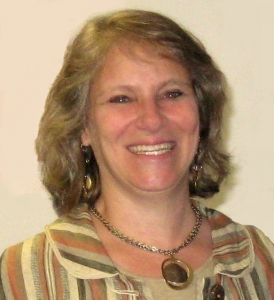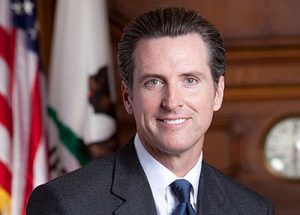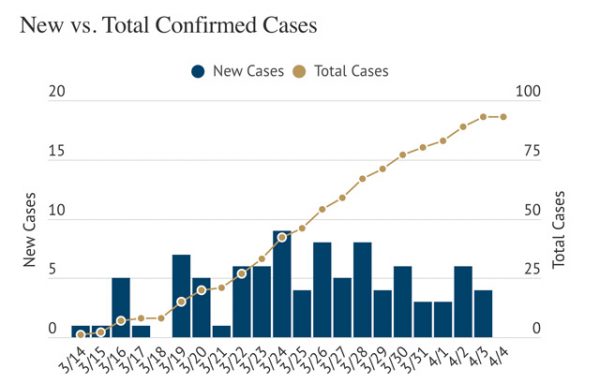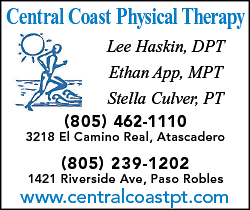COVID-19: SLO County reports death in North County, 65 recoveries, two new cases on Sunday
Officials urge all residents to take steps to reduce spread of virus
—The County of San Luis Obispo announced Saturday that a North County resident in their 80s died of the COVID-19 coronavirus disease. The patient had underlying health conditions, was hospitalized and succumbed to their illness on Saturday. On Sunday, the county reported two new cases of the disease.

Dr. Borenstein
“We extend our sincere condolences to the patient’s loved ones,” said San Luis Obispo County Health Officer Dr. Penny Borenstein. “As the number of local cases grow, this death is a sad milestone for all of us. Most cases of COVID-19 exhibit mild or moderate symptoms, yet this tragic death underscores the urgent need for us to take steps to protect residents who are at higher risk of developing serious illness.”
“Now is a good time for those of us that are healthy to contact our friends and family who may be at higher risk and offer support, such as dropping groceries off at their doorstep,” said Wade Horton, Emergency Services Director.
To date, 95 cases of COVID-19 have been reported in SLO County, with 54 of those cases in North County. Sixty-five have recovered. Twenty-five are currently recovering at home and five are currently hospitalized.
By Monday morning, there were at least 15,158 cases and 350 deaths in the State of California and 337,971 cases and 9,654 deaths in the United States, according to Johns Hopkins University.
Distribution of COVID-19 cases in San Luis Obispo County
- Paso Robles reported COVID-19 cases: 27
- Atascadero reported COVID-19 cases: 19
- Arroyo Grande reported COVID-19 cases: 13
- City of San Luis Obispo reported COVID-19 cases: 8
- Morro Bay reported COVID-19 cases: 6
- Templeton reported COVID-19 cases: 6
- Nipomo reported COVID-19 cases: 5
- Other San Luis Obispo County reported COVID-19 cases: 11
Ages of COVID-19 cases in San Luis Obispo County
- Age 0-17 years old – 4
- Age 18-49 years old – 37
- Age 50 – 64 years – 25
- Age 65 and older – 29
Cases of COVID-19 by status in San Luis Obispo County
- At home – 25
- Hospitalized – 4, 3 in ICU
- Recovered – 65
- Deaths – 1
Source of transmission of COVID-19 cases in San Luis Obispo County
- Travel related transmission – 33
- Known person-to-person transmission – 35
- Unknown community-acquired transmission – 24
- Unknown – 3
Number of people tested for COVID-19 in San Luis Obispo County
As of Sunday afternoon, the county reports conducting 505 COVID-19 tests. An unknown number of residents have been tested by private labs, the county reports. Private labs doing testing include WestPac Labs, Quest Diagnostics, Pacific Diagnostic Laboratories, LabCorp, VRDL.
Additional information from county, state, and federal authorities:
County news briefing schedule changed to Mondays, Wednesdays, and Fridays
– The schedule for San Luis Obispo County’s news briefings hosted by County Administrative Officer and Emergency Services Director Wade Horton and County Health Officer Dr. Penny Borenstein have changed, according to a news release from the county. Going forward, they plan to hold news briefings just Mondays, Wednesdays, and Fridays, beginning Monday, April 6, 2020, at the same time and same location. If, however, an emergent need arises, and a news briefing becomes necessary, they will send media advisories with specific, timely information.
- What: County announcements regarding COVID-19; updates on testing, social distancing, and steps we’re taking to protect the community’s health.
- Who: Speakers include: Wade Horton, County Administrative Officer and Emergency Services Director, Dr. Penny Borenstein, County Health Officer
- When: Monday, Wednesday, Friday, at 3:15 p.m.
- Where: Joint Information Center, 1133 Kansas Avenue, San Luis Obispo, CA
- Watch: https://www.facebook.com/SLOpublichealth.org/
Questions may be submitted in advance to: jic-pio@co.slo.ca.us
At newly converted motel, governor launches ‘Project Roomkey’: An initiative to secure hotel and motel rooms to protect homeless
SACRAMENTO – Over the weekend, California Gov. Gavin Newsom announced that California has become the first state in the nation to secure FEMA approval to provide safe isolation capacity for tens of thousands of people experiencing homelessness in California in order to protect them and the state from COVID-19.

Gov. Gavin Newsom
The state’s effort, Project Roomkey, has set an initial goal of securing up to 15,000 rooms for this purpose and county partners have moved 869 homeless individuals most vulnerable to COVID-19 off the street, out of shelters, and into isolation.
Today’s announcement means state and local governments will receive up to 75 percent cost-share reimbursement from FEMA for hotel and motel rooms, including wraparound supports such as meals, security, and custodial services. Essential behavioral health and health care services will also be provided by the local governments and community partners, as needed.
These emergency protective measures will protect public health by isolating the medically vulnerable, thinning out the shelter population for social distancing, slowing the rate of spread of COVID-19 and, in turn, flattening the curve.
“Homeless Californians are incredibly vulnerable to COVID-19 and often have no option to self-isolate or social distance,” said Governor Newsom. “By helping the most vulnerable homeless individuals off the street and into isolation, California can slow the spread of COVID-19 through homeless populations, lower the number of people infected and protect critical health care resources. We’re working hard with our county partners to get these hotels up and running as rapidly as possible.”
Through this effort, the state will provide dedicated support teams to counties, including assistance in identifying hotels, negotiating and executing operating agreements, and providing the local providers technical assistance in keeping the records necessary to receive federal reimbursement. Local governments are able to utilize the $150 million in emergency homeless aid that Governor Newsom and the Legislature made available to combat COVID-19.
Project Roomkey will target hotels in counties with significant homeless populations that are also experiencing high concentrations of COVID-19 transmission. Local governments to date have secured 6,867 hotel and motel rooms for this purpose.
Every hotel/motel within Project Roomkey will include essential wraparound services, such as custodial, laundry, security and support staff. The Governor also announced a partnership with Chef José Andrés’s World Central Kitchen, which will provide three meals a day to select Project Roomkey hotels through a statewide contract to support local efforts as needed.
To provide safer options during the COVID-19 pandemic, Project Roomkey isolation units serve three critical public health purposes:
Prioritize individuals experiencing homelessness who are asymptomatic, but are at high risk, such as people over 65 or who have certain underlying health conditions, and move them into motel or hotel units where they can more safely self-isolate.
Provide isolation capacity for individuals experiencing homelessness who have been exposed to COVID-19 (as documented by a state or local public health official, or medical health professional) that do not require hospitalization, but need isolation or quarantine; and
Provide isolation capacity for individuals experiencing homelessness who are COVID-19 positive, but who don’t need hospitalization. Without these isolation units, their only choice is to return to a congregate shelter setting or back to an encampment – both of which would lead to further spread of COVID-19.
The local governments are responsible for identifying which shelter clients or encampment residents are selected for these hotel isolation placements and transporting them to the hotels for intake.
The Governor’s ongoing efforts to deploy 1,305 trailers to local governments continues to progress. Trailers, purchased by the state and operated by the local governments, serve the same function as the hotels and complement the efforts of Project Roomkey. The state has purchase orders in place, and executes them and delivers the trailers as local governments provide deployment locations. To date, the state has purchased and deployed 584 trailers. The Governor also announced today the state will receive an additional 28 trailers through philanthropic support in partnership with Homeful, a California-based nonprofit focused on eradicating homelessness.
Governor signs order to expand child care for essential workers
SACRAMENTO – On Saturday, California Gov. Gavin Newsom signed an executive order that will facilitate child care for children of essential critical infrastructure workers by allowing the California Department of Education and California Department of Social Services the flexibility to waive certain programmatic and administrative requirements in response to the COVID-19 pandemic.
The waivers will focus on current eligibility and enrollment priorities that prevent child care and afterschool programs from serving children of essential infrastructure workers. The waiver will allow eligibility for child care to prioritize essential workers, including health care professionals, emergency response personnel, law enforcement, and grocery workers.
Additionally, the order states that the Department of Education and the Department of Social Services shall jointly develop and issue guidance on how the essential worker prioritization will roll out, as well as guidance on how child care programs and providers can safely provide care. This guidance will be issued no later than April 7, 2020.
Priority for abused and neglected children will not be impacted.
The order also allows the state to take advantage of new federal flexibility to provide pandemic Supplemental Nutrition Assistance Program (SNAP) benefits to children. Specifically, the California Department of Social Services and the California Department of Education will share data and information to identify students who may be eligible for the pandemic SNAP benefit, to reduce food insecurity and ensure children receive nutritious meals at low or no cost.
Governor praises counties for pledge to cancel penalties for late property tax payments
SACRAMENTO — Governor Newsom today released the below statement following the announcement of a commitment from California counties to cancel penalties and other charges for homeowners, small businesses and other property owners with demonstrated economic hardship, on a case-by-case basis, due to COVID-19. Property owners that can afford to pay these taxes should continue to pay on time.
“This is good news for Californians. I would like to thank the California State Association of Counties and the California Association of County Treasurers and Tax Collectors for committing to providing economic relief for residents and small businesses facing hardships due to COVID-19,” said Governor Newsom.
State launches website for donations and sales of medical supplies
SACRAMENTO – Gov.Newsom today announced the launch of a new website, covid19supplies.ca.gov, to get critical medical supplies to the front lines of California’s fight against COVID-19. The website will allow individuals and companies to donate, sell or offer to manufacture 13 of the most essential medical supplies, including ventilators, N95 respirators and testing materials.
Governor Newsom also announced the COVID-19 Testing Task Force, a public-private collaboration that will work with stakeholders across the state to quickly and significantly boost California’s testing capacity. The Task Force plans to scale up testing as demand increases.
“These actions marshal the generosity and innovative spirit of Californians to help us achieve two essential goals: getting more lifesaving supplies into our health care system and increasing our testing capacity,” said Governor Newsom.
Governor Newsom called on companies, organizations and individuals who have medical supplies to contribute, either for donation or purchase, to support California’s response to COVID-19 and visit covid19supplies.ca.gov.
Additionally, three specific collaborations have launched today as part of the testing effort:
- Collaboration with the University of California, San Diego and University of California, Davis to establish high throughput testing hubs.
- Collaboration with Stanford Medicine to launch the first serology test invented in California.
- Collaboration with Abbott Laboratories to deploy the first rapid point-of-care test across 13 health care delivery systems and 75 sites.
The Task Force, co-chaired by California Department of Public Health Assistant Director Charity Dean, M.D., M.P.H. and Blue Shield of California President and CEO Paul Markovich, will ensure the state has sufficient capacity and supplies to administer a significantly greater number of tests.
“The Task Force is connecting with laboratories across California to tap into unique technologies to improve and refine our testing capabilities to ensure we’re meeting the needs of patients across the state,” said Dr. Dean.
The Testing Task Force is focusing on:
- Ensuring California has lab capacity to rapidly turn around test results and increase capacity strategically to meet demand;
- Improving the supply chain to ensure that California can both collect samples and evaluate results without delay;
- Enabling new, high-quality tests to launch in California as soon as possible;
- Improving our ability to accurately track and evaluate COVID-19 testing capacity, results and reporting; and
- Building the workforce necessary to meet our testing goals.
“The Task Force will work together with California academic systems, private systems, public health experts and others to ensure we’re creating the most streamlined and effective way to evaluate testing data,” Blue Shield of California President and CEO Paul Markovich said. “This kind of public-private collaboration will allow us to tap into the systems needed to get the results California deserves.”
Governor issues statement on deaths of two Riverside County Sheriff’s Deputies
SACRAMENTO — Governor Gavin Newsom today issued the following statement regarding the two COVID-19 related deaths of Riverside County Sheriff’s Deputy Terrell Young and Deputy David Werksman:
“The deaths of these two heroes are a very real and painful reminder of the risk these women and men face every single day protecting the people of California. Jennifer and I send our deepest and most sincere condolences to the family, friends, and colleagues of Deputy Young and Deputy Werksman as they grapple with this tremendous loss.”
Deputy Young, 52, passed away Thursday morning due to complications from COVID-19. He began his career with the Riverside County Sheriff’s Department in December 2005 and was most recently assigned to the Cois Byrd Detention Center. He is survived by his wife and four children.
Deputy Werksman, 51, died Thursday night after battling the virus for nearly three weeks. He was a 22-year veteran of the Riverside County Sheriff’s Department. He was assigned to the Riverside County Sheriff’s Department Public Records Unit. Deputy Werksman is survived by his wife and three children.
In honor of Deputy Young and Deputy Werksman, Capitol flags will be flown at half-staff.
CDC recommends wearing of cloth face coverings, masks
“We now know from recent studies that a significant portion of individuals with coronavirus lack symptoms (“asymptomatic”) and that even those who eventually develop symptoms (“pre-symptomatic”) can transmit the virus to others before showing symptoms,” the US Centers for Disease Control said in a statement over the weekend.
This means that the virus can spread between people interacting in close proximity—for example, speaking, coughing, or sneezing—even if those people are not exhibiting symptoms. In light of this new evidence, CDC recommends wearing cloth face coverings in public settings where other social distancing measures are difficult to maintain (e.g., grocery stores and pharmacies) especially in areas of significant community-based transmission.
It is critical to emphasize that maintaining 6-feet social distancing remains important to slowing the spread of the virus. CDC is additionally advising the use of simple cloth face coverings to slow the spread of the virus and help people who may have the virus and do not know it from transmitting it to others. Cloth face coverings fashioned from household items or made at home from common materials at low cost can be used as an additional, voluntary public health measure.
The cloth face coverings recommended are not surgical masks or N-95 respirators. Those are critical supplies that must continue to be reserved for healthcare workers and other medical first responders, as recommended by current CDC guidance.
This recommendation complements and does not replace the President’s Coronavirus Guidelines for America, 30 Days to Slow the Spreadexternal icon, which remains the cornerstone of our national effort to slow the spread of the coronavirus. CDC will make additional recommendations as the evidence regarding appropriate public health measures continues to develop.
What is the cause of COVID-19 transmission?
–Transmission of the COVID-19 virus appears to be caused by close and prolonged contact, Borenstein said. The greater the illness has affected someone, the more likely they are to transmit it to other people, she said. Asymptomatic transmission, if occurring at all, is a minor proportion of infections, she said. Airborne infection appears to be limited to someone infected who coughs or sneezes and vapor droplets may linger for a short period of time. But neither asymptomatic transmission nor airborne transmission appear to be a dominant means of transmission, she said. The virus does tend to transfer well with human contacts, like shaking hands, and linger on hard surfaces, studies have shown.
How people can protect themselves
Every person has a role to play. Protecting yourself and your family comes down to common sense:
- Staying home except for essential activities – “Shelter at home“
- Washing hands with soap and water for a minimum of 20 seconds.
- Avoiding touching eyes, nose or mouth with unwashed hands.
- Cover a cough or sneeze with your sleeve, or disposable tissue. Wash your hands afterward.
- Avoiding close contact with people who are sick.
- Staying away from work, school or other people if you become sick with respiratory symptoms like fever and cough.
- Practicing social distancing.
- Following guidance from public health officials.
What to do if you think you’re sick
Call ahead: If you are experiencing symptoms of COVID-19 (fever, cough or shortness of breath) and may have had contact with a person with COVID-19, or recently traveled to countries with apparent community spread, call your health care provider before seeking medical care so that appropriate precautions can be taken.
San Luis Obispo County’s urgent communicable disease line is (805) 781-4553.
- Follow all local COVID-19 coronavirus news updates
- San Luis Obispo County COVID-19 website – readyslo.org
Comments
The news staff of the Paso Robles Daily News wrote or edited this story from local contributors and press releases. The news staff can be reached at info@pasoroblesdailynews.com.






















